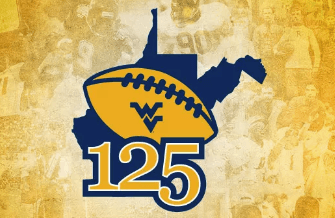Logo:8uxkicgqtzu= Wvu Football

The logo of WVU football serves as more than just a visual identifier; it embodies the essence of Mountaineer pride and tradition that has been cultivated over decades. Its evolution reflects not only changes in design preferences but also a broader narrative of the university’s growth and its athletic ambitions. As we explore the significance of this emblem to fans and its role in shaping WVU’s identity, one must consider how these elements intertwine with the university’s storied legacy and what they reveal about the future of its athletic brand.
History of the WVU Logo
The history of the West Virginia University (WVU) logo is a fascinating reflection of the institution’s evolution and identity over the years.
Initially simplistic, the logo design has transformed significantly, aligning with contemporary trends in WVU branding.
Each iteration encapsulates the university’s values and aspirations, illustrating how visual identity can effectively communicate institutional pride and foster a sense of belonging within the community.
See also: Logo:8uxkicgqtzu= West Virginia Football
Significance to Fans
For countless fans, the WVU logo serves as a powerful symbol of identity and allegiance, transcending mere branding to embody a rich tapestry of tradition and pride.
This emblem fosters fan loyalty, uniting individuals in a shared passion for their team while instilling a sense of community pride.
The logo not only represents athletic achievement but also reinforces the collective spirit of Mountaineer supporters.
Logo Evolution Over Time
As the landscape of collegiate athletics has evolved, so too has the West Virginia University (WVU) logo, reflecting changes in branding strategies and cultural significance.
Over time, design elements have been refined to capture the essence of the university’s spirit. This evolution not only enhances brand recognition but also resonates with a diverse audience, embodying the freedom and pride associated with WVU athletics.
Impact on WVU Identity
Reflecting the deep-rooted traditions and values of West Virginia University, the evolution of the WVU logo has significantly shaped the institution’s identity within the competitive landscape of collegiate sports.
This branding strategy not only enhances visibility but also fosters community engagement, uniting alumni and current students under a shared emblem.
Ultimately, the logo serves as a powerful symbol of pride and belonging for the WVU community.
Conclusion
The WVU football logo serves as a vibrant emblem of collective heritage, encapsulating the essence of Mountaineer pride. Its evolution reflects not only aesthetic shifts but also the enduring spirit of community among fans and alumni. This insignia transcends mere branding, symbolizing a commitment to tradition and excellence within collegiate athletics. Ultimately, the logo fosters a profound sense of belonging, uniting individuals under a shared narrative that celebrates both history and aspirations for the future.




